Disclosure: This article contains affiliate links. We may earn a commission from purchases at no extra cost to you, which helps our travel content.
The first time my son Mateo heard reggae music echo through our Philadelphia apartment, his little feet started moving instinctively. My daughter Sofia immediately asked, 'Where does this music come from, Mom?' That simple question planted the seed for our winter escape to Jamaica—not just for beaches and sunshine, but for a deeper exploration of the island's unparalleled musical heritage. As a public defender who's witnessed firsthand how cultural understanding builds bridges, I've always believed travel is the most powerful classroom for my children. Jamaica offered the perfect curriculum: history, social justice, artistic expression, and cultural resilience all wrapped in irresistible rhythms that have influenced the world. Our week-long journey from Kingston's urban pulse to Montego Bay's laid-back shores became a musical pilgrimage that taught us all about the power of artistic expression as resistance, celebration, and cultural identity.
Kingston: The Birthplace of Reggae
Arriving in Kingston feels like stepping into the pages of music history. The city's energy is palpable—a complex urban landscape where creativity has always flourished amid struggle. Our first morning, we headed straight to the Bob Marley Museum, housed in the legendary artist's former home and studio at 56 Hope Road. My children were transfixed by our guide's stories of how Marley used music as a tool for social change and spiritual expression.
'Mom, he was like a lawyer with a guitar instead of words,' Sofia whispered, making connections I hadn't anticipated. The museum offers an intimate glimpse into Marley's life, with his personal belongings, performance footage, and the bullet holes still visible from the 1976 assassination attempt—a sobering reminder of music's political power.
From there, we ventured to Trench Town Culture Yard, the government yard in Trench Town that Marley immortalized in song. This National Heritage Site provides a crucial historical context for understanding reggae's roots in community resilience. The humble conditions where musical giants once lived and created masterpieces left a lasting impression on my children about how transformative art can emerge from challenging circumstances.
No musical exploration of Kingston would be complete without visiting the legendary Studio One on Brentford Road, Jamaica's equivalent of Motown. Though the original studio is no longer operational, the building stands as a monument to where ska, rocksteady, and reggae were pioneered. I brought along my portable speaker to play classic Studio One recordings right where they were created—creating a magical moment of musical time travel for the kids.
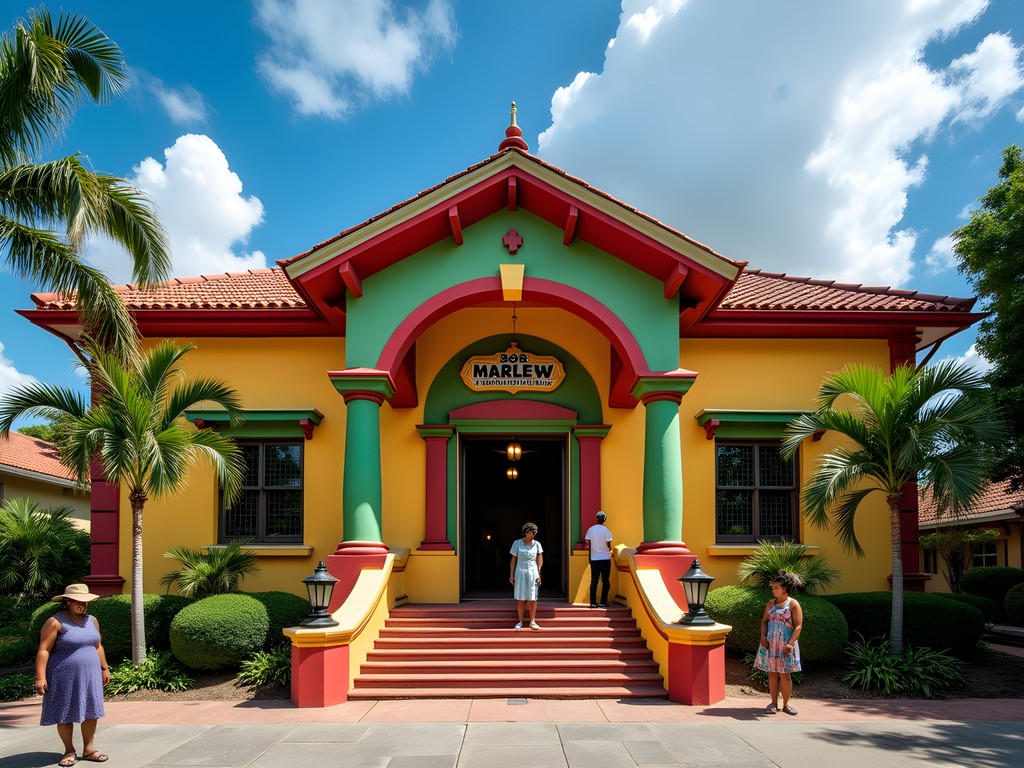
💡 Pro Tips
- Book the Bob Marley Museum tour in advance as they fill up quickly, especially during high season
- Hire a reputable local guide for Trench Town visits to ensure safety and gain deeper insights
- Visit the record shops along Orange Street (known as 'Beat Street') to discover vinyl treasures
Sound System Culture: The Heartbeat of Jamaican Music
To truly understand Jamaican music, you need to experience a sound system—the mobile DJ setups that revolutionized how music is shared and experienced. These aren't just speakers; they're community institutions that have shaped global music culture from hip-hop to electronic dance music.
We connected with Kingston Dub Club, which hosts reggae dub sessions every Sunday night on Jack's Hill overlooking the city. While the full experience runs late into the night (too late for my kids), the owner graciously allowed us to visit during sound check. The massive speaker stacks, custom-built amplifiers, and careful acoustic preparations were a revelation for my technology-obsessed son.
'This is like ancient smart technology,' Mateo observed, drawing connections to our previous explorations of early tech innovations on tribal lands in the American Southwest.
For families with older children or groups of adults, the authentic sound system experience is unmissable. However, with younger children, I recommend the more accessible Kingston Dub Club early preview or the family-friendly daytime sessions sometimes held at Emancipation Park.
To capture these incredible audio experiences, I brought my portable audio recorder which has become an essential part of our travel kit. Recording these unique soundscapes allows us to revisit our journeys through audio memories—something especially meaningful for music-focused travel.
The most important lesson from sound system culture is understanding how communities without access to traditional media created their own channels for music, news, and cultural expression. This resilience and innovation resonated deeply with my work as a public defender, where I often witness similar creativity from communities facing systemic barriers.

💡 Pro Tips
- Contact venues in advance to check if they offer family-appropriate viewing times or sound checks
- Protect young ears with quality noise-reducing headphones at louder venues
- Look for daytime sound system events at beaches and parks that are more family-friendly
Musical Murals: Kingston's Open-Air Art Gallery
Kingston's walls tell stories through vibrant murals that document the island's musical journey and social history. As someone who's studied public murals as historical records across the American Southwest, I was eager to show my children how Kingston's street art serves as both cultural expression and community archive.
We booked a guided walking tour of downtown Kingston's Fleet Street, where the Paint Jamaica project has transformed the area into an open-air gallery. Our guide, a local artist, helped translate the rich symbolism in murals depicting musical icons, historical events, and Rastafarian philosophy. Sofia diligently sketched her favorite images in the travel journal I'd given each child to document our journey.
What makes Kingston's murals special is how they connect music to broader social movements. Images of Marcus Garvey appear alongside Bob Marley; colonial history intertwines with independence celebrations; and throughout it all, music serves as the narrative thread binding these stories together.
'These are like album covers for the whole country's story,' Mateo observed insightfully.
In Trench Town, we witnessed how community-led art projects are reclaiming public spaces and preserving local history. Artists explained how music and visual art work together as tools for community development—a powerful lesson in creative problem-solving for my children.
For families concerned about safety in downtown Kingston, I recommend booking through established tour companies like Kingston Creative, who organize monthly art walks with security. Their guides provide crucial context about the intersection of music, art, and social justice that makes these murals so meaningful.
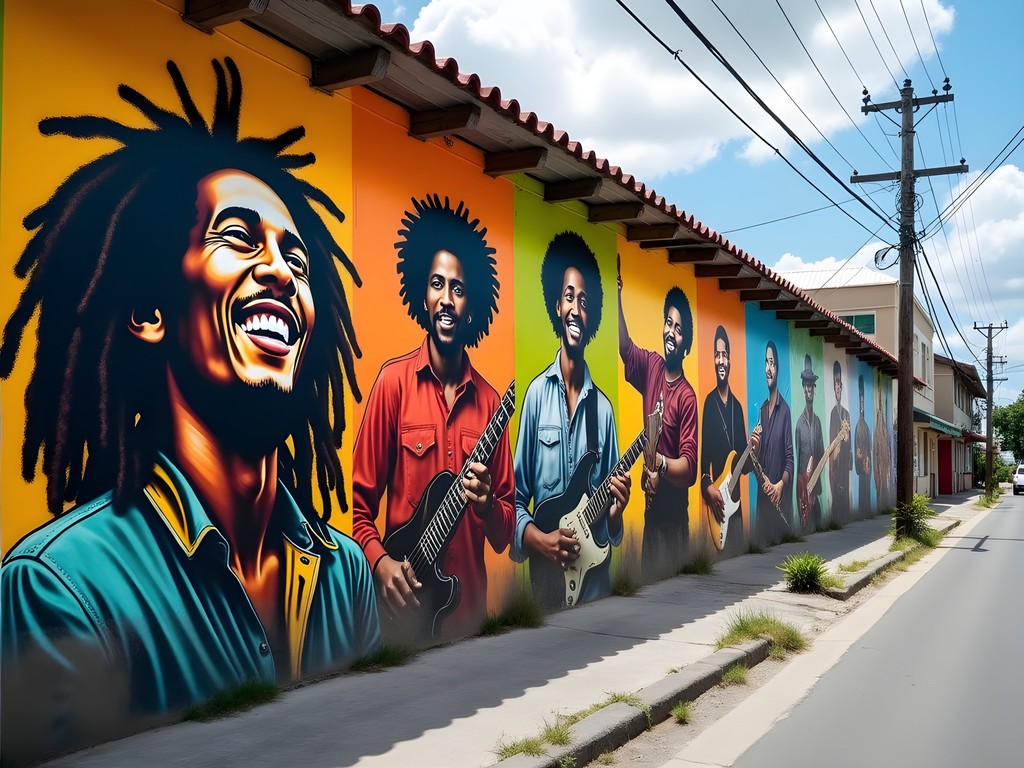
💡 Pro Tips
- Join Kingston Creative's monthly ArtWalk events (last Sunday of each month) for a safe, organized experience
- Bring small denominations to purchase directly from community artists
- Schedule mural tours in the morning when temperatures are cooler and lighting is ideal for photography
The Journey to Montego Bay: Music Along the Coast
The drive from Kingston to Montego Bay offers a musical journey through Jamaica's diverse landscapes. Rather than taking the direct route, we opted for the longer coastal road, stopping at significant sites that tell the story of how Jamaica's music evolved regionally.
In Ocho Rios, we visited the Harmony Hall Art Gallery, where local musicians often perform impromptu acoustic sets among artwork. The children were fascinated by the fusion of traditional mento music with contemporary sounds—a living demonstration of how musical traditions evolve while maintaining their cultural roots.
Further along in Falmouth, we explored the historic town where Jamaica's colonial past is preserved in Georgian architecture. Here, our guide explained how European musical traditions merged with African rhythms during slavery, eventually giving birth to uniquely Jamaican forms. The town square occasionally hosts performances of quadrille dancing accompanied by traditional folk music—a window into Jamaica's musical foundations.
As we approached Montego Bay, we stopped at Greenwood Great House, a former plantation house with a troubling history but an important collection of antique musical instruments. This provided an opportunity to discuss with my children how enslaved people transformed European instruments and musical forms into expressions of resistance and cultural preservation.
For this road trip portion, I was grateful for our travel power bank that kept our devices charged for navigation, photography, and playing the curated playlist of regional Jamaican music I'd prepared for each leg of our journey. The soundtrack enhanced our understanding of how geography influenced musical development across the island.

💡 Pro Tips
- Allow a full day for the coastal route from Kingston to Montego Bay to appreciate the stops along the way
- Download offline maps and a curated Jamaican music playlist before departing Kingston
- Visit Falmouth on Tuesday afternoons when local musicians sometimes gather informally in the town square
Montego Bay: Where Tradition Meets Tourism
Montego Bay presents a fascinating contrast to Kingston's raw authenticity. Here, Jamaica's musical traditions have adapted to tourism while still maintaining their cultural integrity—if you know where to look beyond the resort performances.
We began at the Montego Bay Cultural Centre in Sam Sharpe Square, which houses exhibits on the region's musical development and relationship to social movements. The children were particularly moved by learning how Sam Sharpe, a Baptist deacon and leader of the 1831 Christmas Rebellion against slavery, used religious songs as coded communication—drawing parallels to how civil rights movements worldwide have employed music as a tool for organizing.
'It's like their songs were secret messages,' Sofia whispered, grasping the power of art as resistance.
For an authentic evening experience, we visited the local favorite Pier One on Thursday night, when their live reggae band performs. Arriving early (around 7pm) made this suitable for children, as we enjoyed the music during dinner before the venue transitions to a more adult atmosphere later in the evening. The seaside setting with musicians performing against the backdrop of the Caribbean sunset created magical memories.
What surprised me most about Montego Bay was discovering Jamaica's thriving jazz scene at places like Deja Resort's weekly jazz nights. Here, talented musicians blend traditional reggae rhythms with sophisticated jazz harmonies, creating a uniquely Jamaican interpretation of the genre. This fusion perfectly symbolizes Jamaica's musical journey—honoring roots while continuously innovating.
For families seeking more interactive experiences, I recommend the drum-making workshops at the Montego Bay Craft Market, where artisans demonstrate traditional techniques for creating instruments. My children were thrilled to craft simple percussion instruments under expert guidance, connecting them physically to Jamaica's musical heritage.

💡 Pro Tips
- Visit resort performances of Jamaican music with a critical eye—then seek out local venues for authentic experiences
- Check the Montego Bay Cultural Centre for special family-friendly workshops and performances
- Respect the transition at venues like Pier One by enjoying early performances and departing before the late-night atmosphere changes
Final Thoughts
Our musical journey through Jamaica transcended typical tourism—it became a masterclass in resilience, creativity, and cultural expression that my children still reference months later. Through studio visits, sound systems, murals, and performances, we witnessed how music serves as both historical archive and living tradition in Jamaican society. The experience reinforced my belief that travel's greatest gift is perspective—seeing how communities use art to overcome challenges, preserve identity, and create joy even amid struggle. For families considering Jamaica beyond the all-inclusive resorts, I encourage you to engage with the island's musical heritage respectfully and curiously. The conversations it sparked with my children about history, justice, and creative expression have continued long after our return, proving that the rhythms of Jamaica resonate far beyond its shores. As Bob Marley wisely said, 'One good thing about music, when it hits you, you feel no pain'—but I'd add that when it teaches you, the lessons last a lifetime.
✨ Key Takeaways
- Jamaica's music scene offers rich educational opportunities about history, social justice, and cultural resilience
- Balancing Kingston's authentic music heritage with Montego Bay's accessibility creates a comprehensive Jamaican experience
- Engaging local guides provides crucial context about the intersection of music, politics and society
- Family travel to Jamaica can go beyond beaches by focusing on cultural experiences that resonate with children
📋 Practical Information
Best Time to Visit
December through April (dry season)
Budget Estimate
$150-250 per day for a family of 3-4 (mid-range)
Recommended Duration
7-10 days
Difficulty Level
Moderate (Requires Planning For Safety In Certain Areas)

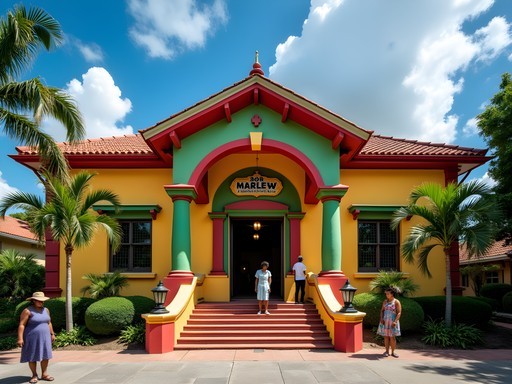












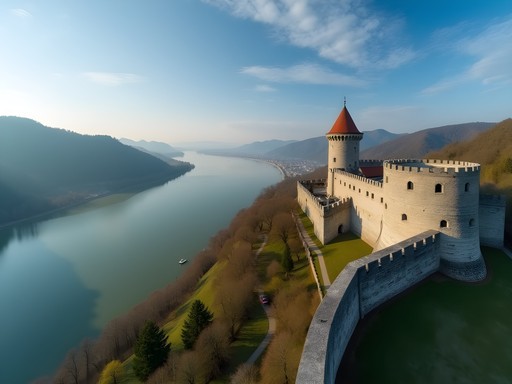
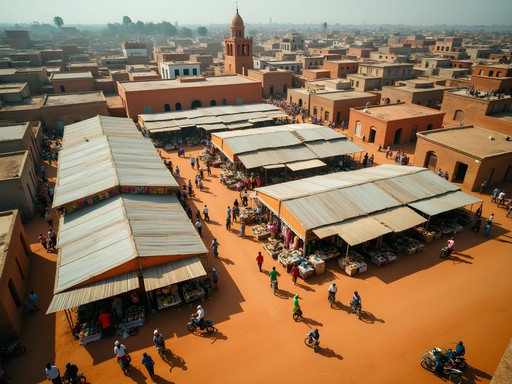
Comments
vacationlife
Just got back from Jamaica last month and followed a similar music route! Pro tip: check event calendars before you go. We lucked into an amazing reggae festival in MoBay that wasn't advertised much online but was the highlight of our trip. Also, the Bob Marley Museum in Kingston is worth the entrance fee but gets PACKED - go early!
Savannah Torres
Great advice about checking local events! We were there during Reggae Month (February) which was incredible timing - seemed like there was music everywhere!
Haley Hamilton
Savannah, your post transported me back to my own Jamaican musical pilgrimage! There's something magical about experiencing reggae in its birthplace. For anyone planning a similar trip, I highly recommend bringing a portable speaker - we had impromptu dance parties on beaches and made instant friends with locals who appreciated our love for their music. My favorite memory was a sunset jam session in Negril where local musicians let my husband join in with his harmonica. Music truly is the universal language, and nowhere proves that better than Jamaica!
skybackpacker
Love that speaker idea! Did you feel safe bringing decent tech with you? I've heard mixed things.
Haley Hamilton
Totally reasonable concern! We were careful in Kingston (kept valuables at hotel when exploring), but felt comfortable everywhere else. Just use normal travel precautions and you'll be fine!
globeking
How did you handle transportation between Kingston and Montego Bay? Thinking of doing this trip with my teenage kids next summer!
Savannah Torres
We hired a driver for the Kingston-Montego Bay route which was perfect with kids. It's about a 3-4 hour drive, but our driver made stops at some small towns with cool music spots along the way. Made the journey part of the experience! There are cheaper bus options too, but with kids the private driver was worth every penny.
globeking
Thanks so much! Private driver sounds like the way to go with kids. Any company you'd recommend?
Savannah Torres
We used Jamaica Tours Limited - they were super reliable and our driver was incredibly knowledgeable about music history!
starlegend
Those sound system photos are EPIC! Takes me right back to my Jamaica trip in 2023!
Gregory Boyd
Excellent cultural deep-dive, Savannah. I explored Kingston's music scene last year and found the contrast between the gritty urban environment and the transcendent sounds fascinating. Did you make it to Trench Town Culture Yard? The historical significance of seeing Bob Marley's humble beginnings adds crucial context to understanding reggae's evolution. Also worth noting for anyone planning a similar trip - Kingston requires street smarts that tourist-centric Montego Bay doesn't. The musical rewards are worth it, though!
Savannah Torres
We absolutely did visit Trench Town! It was actually one of my kids' favorite stops - seeing where the music they'd been listening to actually originated from really connected everything for them. And you're right about the street smarts in Kingston - we hired a local guide which I'd highly recommend for families.
skybackpacker
This post gives me LIFE! Jamaica's been on my bucket list forever and your music journey sounds amazing. Those Kingston murals look incredible!
Savannah Torres
Thanks @skybackpacker! The murals were honestly even more vibrant in person - my photos don't do them justice!
wanderfan
Those murals look amazing! Adding this to my travel plans for next year!
Stephanie Romano
Savannah, your post captures the soul of Jamaica so beautifully! We took our kids (8 and 10) on a similar journey last summer, and it was transformative. The music history tour at the Bob Marley Museum was surprisingly engaging for them - the guide really made the stories come alive. One tip for families: we found scheduling our activities in the morning and having downtime in the afternoon heat worked best with kids. The route from Kingston to Montego Bay is indeed magical - we stopped at a roadside jerk chicken stand where a local musician was playing. Unplanned moments like that became our favorite memories. Did you find the same?
Savannah Torres
Stephanie, you're so right about those unplanned moments! We had a similar experience when our taxi driver in Kingston started singing along to the radio and taught the kids a traditional folk song. By the end of the ride, we were all singing together! And yes to the morning activities - we did the same schedule to avoid the afternoon heat.
redking
Great post! We're thinking of taking our 6-year-old twins next spring. Was it easy getting around with kids? Any places that were particularly kid-friendly?
Savannah Torres
Absolutely! Jamaicans are incredibly welcoming to children. The coastal areas near Montego Bay have calmer beaches that are perfect for kids. I'd recommend bringing a good kids' sun hat as the sun is intense. Also, the interactive music workshops were perfect for kids - they got to try instruments and learn simple rhythms!
exploreking
This post brought back so many memories! We did a similar music tour in Kingston last year but never made it to Montego Bay. The murals in Trench Town were absolutely mind-blowing. Did your kids have a favorite spot? My daughter couldn't stop talking about the drum session we attended.
Savannah Torres
Mateo was obsessed with the sound system demonstration! Sofia loved the murals in Trench Town too - she's been drawing her own 'reggae art' since we got home. The drum circle was definitely magical - kids just connect with rhythm so naturally!
exploreking
That's so sweet! Music really is a universal language, especially for kids. We bought a small djembe drum as a souvenir and it's still getting daily use!
Venture X
Premium card with 2X miles, $300 travel credit, Priority Pass